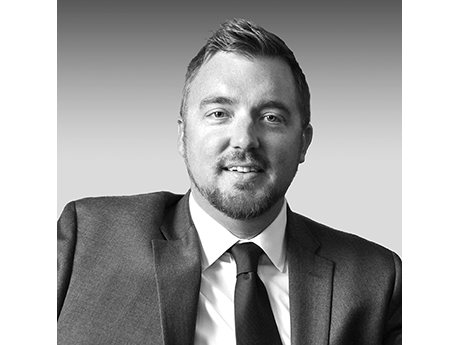By Fil Southerland, Yardi
Senior living plays a pivotal role in the success of value-based care, a health care model in which providers are compensated based on patient results. As health care providers across the country move from a fee-for-service model to an outcome-based reimbursement model, seniors housing operators make essential contributions to achieving positive outcomes and managing risk for senior patients.
As an industry, senior living needs to embrace this role, coordinating and contracting with health care providers in a peer relationship. This is vital to the outcome of the residents we serve. Many principles and hallmarks of value-based care can also enable the greater performance of senior living communities themselves.
Teaming Up
Value-based care in senior living requires a team effort between health care providers and communities to collectively improve outcomes. Health providers are rewarded not for the volume of services delivered, but for the impact on resident health and well-being. Done right, this model improves care quality, reduces costs and strengthens relationships between caregivers, residents and their loved ones. But to succeed, it requires more than good intentions and continuation of business as usual. Senior living operators need to have integrated technology in place that includes point-of-care charting, fully digital clinical record keeping and business intelligence that provides predictive population health insights and other important data.
At Yardi, we work with communities across the country that are embracing this challenge. What we see is promising. Operators are rethinking how care is delivered, how success is measured and how innovation can serve both residents and the bottom line.
Information is Everything
Value-based care depends on a continuous feedback loop — one wherein data is collected at the point of care and flows seamlessly through digital health records. In this way, decision-making and care coordination can be informed by real-time analytics.
Technology is not a silver bullet, but it is the foundation — not only for connecting senior living and health care providers, but for reforming seniors housing operations for the better.
A single, connected platform does more than improve efficiency. It empowers caregivers with context. Imagine a caregiver walking into a resident’s room, already knowing the full social and health history, including the patient’s clinical past, updates from recent health system encounters and insight into key risk factors. This is achieved not through memorizing a chart, but through a platform that presents information to the entire care team clearly and automatically in real time.
With this kind of system in place, senior living operators can identify early warning signs before they become critical events. Providers can reduce hospital readmissions and tailor care plans to individuals, not averages. This isn’t future thinking. It’s happening now — in communities that have invested in aligning their operations and clinical tools with a coordinated provider strategy.
Metrics of Operational Success
In value-based care, success is not in quantity but in quality. It is measured by outcome improvements like improved resident engagement, resident satisfaction, fewer ER visits and reduced fall rates. It can also be measured in empowered staff and lower turnover rates.
Achieving these outcomes requires a culture shift. Senior living operators must align staff training, operational procedures and leadership incentives with these new goalposts of success. Operators also need insight — not just into what’s happening today, but into trends that predict what is coming tomorrow.
For the latter, technology — in the form of predictive analytics — again makes a difference. With business intelligence tools that draw from integrated records, operators can track performance across communities. Providers can identify at-risk residents and deploy interventions before an acute event. Pair this with the ability to quantify how clinical and operational risk factors affect net operating income. These aren’t just dashboards. They’re decision engines that drive outcomes and next-generation operations.
With better, smarter technology, caregivers can shift from reactive observers to empowered participants. This shift improves outcomes for residents and gives staff the ability to make meaningful, proactive interventions, improving retention. Families take note of the caregiver’s connection with residents, and this defines a community’s reputation.
A Collaborative Ecosystem
Senior living operators are not in this alone. Value-based care requires coordination across physicians, payers, caregivers and community leadership. It also depends on data-sharing standards and joint, coordinated goals.
Nationwide, partnerships between senior living operators and accountable care organizations are growing. These partnerships are built on aligned incentives:
- Keeping residents healthier and in accordance with care goals
- Retaining residents longer
- Reducing unnecessary high-cost health care services
Technology plays a critical role in making these partnerships work. Integrated platforms facilitate secure data exchange, automate reporting, help meet compliance requirements and provide important updates and insights. Success will come to those who actively embrace the technology and coordinated partnerships, so that daily care within communities and health care work together with beautiful synergy.
The Road Ahead
Put simply, the shift to value-based care is capitalism at play in our industry. Residents expect better, more personalized care with improved outcomes. Health care providers see the opportunity for more effective and efficient care delivery by working with senior living.
For senior living operators, this means more than investing in new systems. It means embracing a next-generation, technology-enabled operations.
The good news? Operators that make this shift are already seeing results with lower rates of staff turnover, higher occupancy levels and greater resilience in the face of operational pressures.
Perhaps most importantly, value-based care gives senior living communities a renewed and measurable sense of purpose in how we affect the quality of life for the residents we serve.
Fil Southerland is director of health care solutions at Yardi. An appointee to the Health Information Technology Advisory Committee (HITAC), he also serves on the Kno2 QHIN Governance Council, the LeadingAge CAST Commission and the NIC Partnering for Health committee. He is a proud member of the Choctaw Nation and a Sequoyah Fellow of the American Indian Science and Engineering Society.

